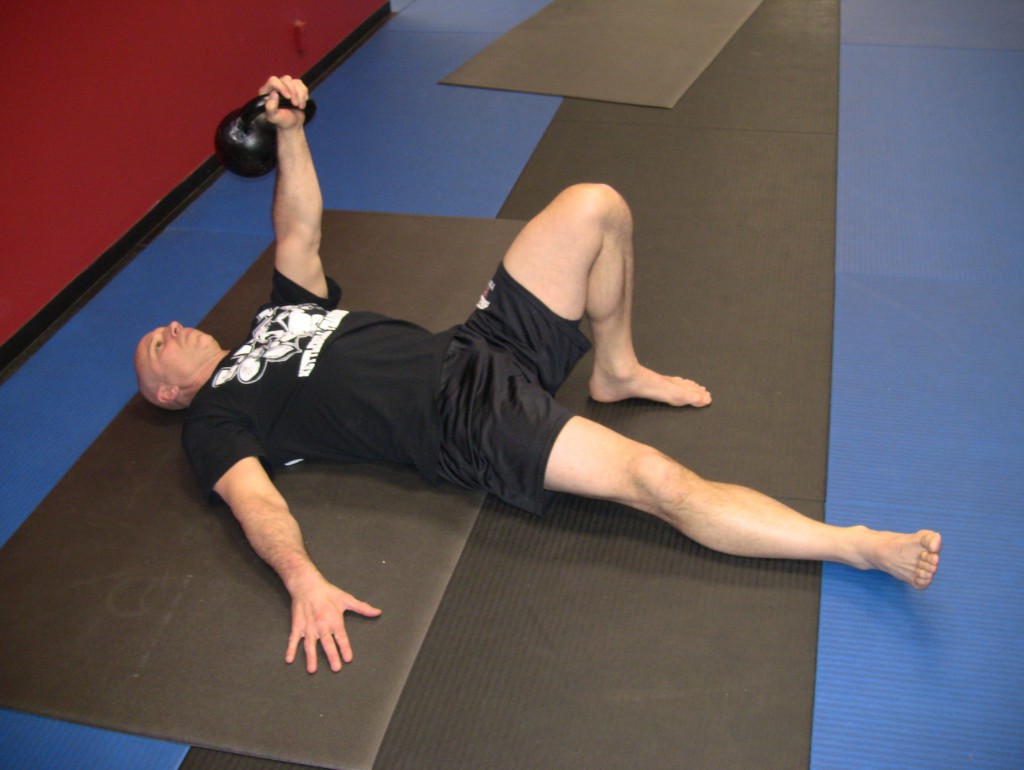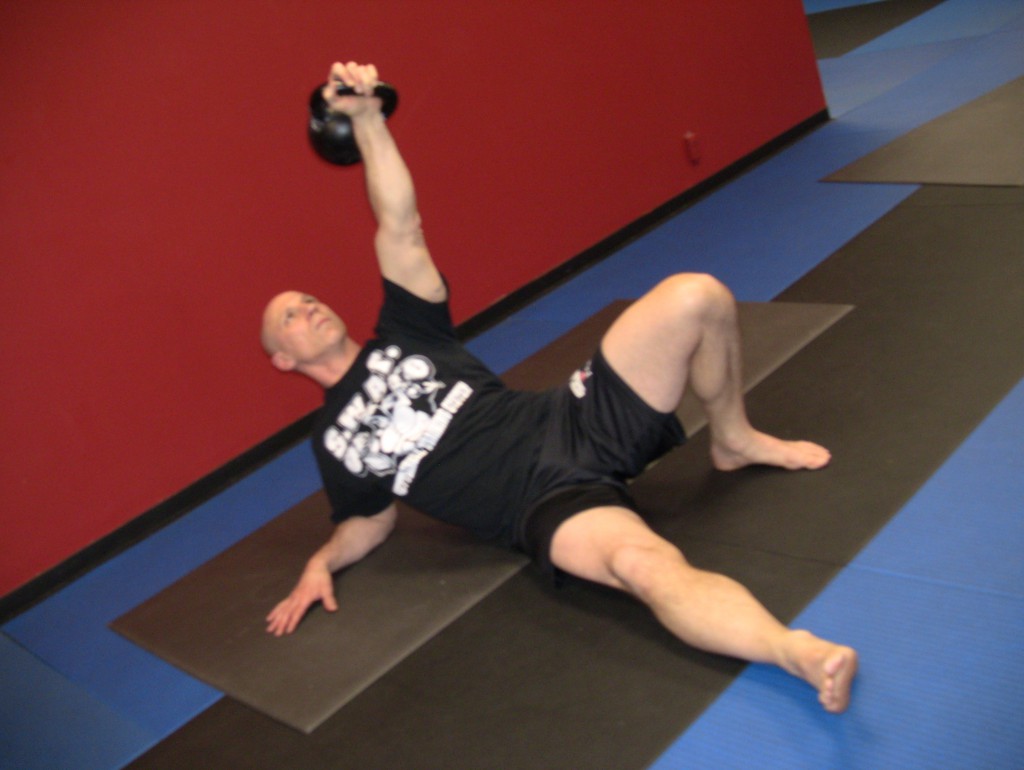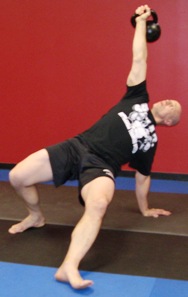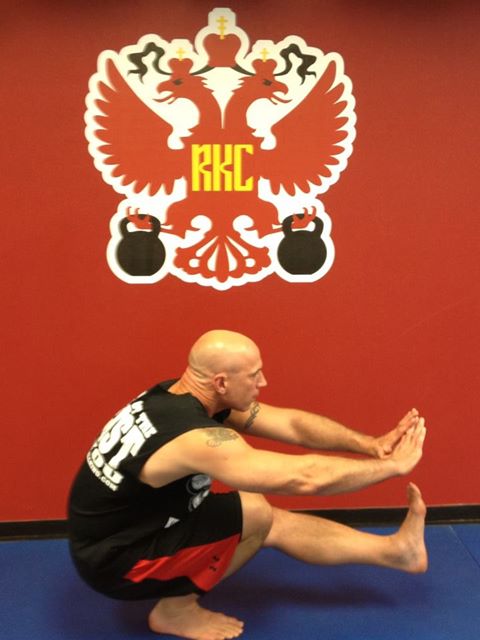 The next movement in our Dirty Dozen Line-up is #9, The Get Up. The Get Up is often referred to as the Turkish (TGU) or Low Sweep Get Up. Just the mention of the movement conjures up fear, apprehension and utter abhorrence in most people. I had the same attitude until I began to absolutely love this movement!
The next movement in our Dirty Dozen Line-up is #9, The Get Up. The Get Up is often referred to as the Turkish (TGU) or Low Sweep Get Up. Just the mention of the movement conjures up fear, apprehension and utter abhorrence in most people. I had the same attitude until I began to absolutely love this movement!
I recall when I first started training with Kettlebells, I only did the TGU’s (as we referred to them) enough to pass my tests and move on. After the 6 months or so upon passing my RKC 1, I started to notice that through my practice, my TGU’s were getting better. I also noticed that my shoulder was more stable and the weights of my other lifts were increasing! Much to the chagrin of my students, I started to completely embrace the Get Up.
I soon realized that I wasn’t just doing them to pass my next test, but to get the most that I could from the movement. I started to add different types of Get Ups to my training regiment. Bridge, Squat, Bottoms-up, No Hand and Dual Bell Get Ups to name a few.
 I then began to incorporate Heavy Get Up training and worked on methods to imprint the movement into the muscle memory. Owning each segment of the movement became my focus. The Roll to Press, Sit-up to Elbow, Tall Sit, Side Press, Tall Kneel and the Standing Press. Each section of the Get Up needed to be owned. To imprint this I employed three basic approaches. The first was practicing a 5 second hold at each of the 6 specific positions of the Get Up.The second was to perform 5 repetitions at each position and the third was the 5 3 2 1 Method.
I then began to incorporate Heavy Get Up training and worked on methods to imprint the movement into the muscle memory. Owning each segment of the movement became my focus. The Roll to Press, Sit-up to Elbow, Tall Sit, Side Press, Tall Kneel and the Standing Press. Each section of the Get Up needed to be owned. To imprint this I employed three basic approaches. The first was practicing a 5 second hold at each of the 6 specific positions of the Get Up.The second was to perform 5 repetitions at each position and the third was the 5 3 2 1 Method.
Training Method #1:
At each of the positions, hold the Kettlebell in the lock out for a 5 second count. Feel the position of your body and embrace the tension. Don’t simply do it to get it done and over with, though the temptation will be present. Focus on increasing your stability in each of the 6 positions on the way up as well as the way down.
Training Method #2:
This method always evokes moans and groans from my class. Well, that simply makes me grin and tell them how many sets to do. Execute 5 presses at each of the 6 positions. Change position with the Kettlebell in the full lock out, no resting in the Rack. Go up one side of your body, change hands at the top and do your Get Down on the opposite side with the same 5 press repetitions at each position. Repeat on the other side, but perform the ascent with the side that descended last time.
Training Method #3:
I call this one the 5 3 2 1 Method. I use this for increasing my 1, 2 & 3 RM (Repetition Maximums). I will generally perform 3 to 5 sets of the aforementioned repetitions. Beginning with a lower weight and increasing to a higher one. Be very cautious when performing the doubles and singles, especially if you are in “uncharted waters” (a weight that you’ve never done previously). I noticed the most improvement when I employed this method last in the progression. It is essential to have complete stabilization and OWN each and every of the 6 positions to safely increase the weight of your Get Ups.
Well it’s now time to grab your Kettlebell and GET UP!
Coach Phil
***
About Master RKC Phil Ross: Master RKC, 8th Degree Black Belt, Specialist in Bodyweight Strength, PCC and CK-FMS Certified. His name is synonymous with Martial Arts and Fitness. He is known as the area’s Kettlebell King and has successfully competed on the National Level in… Read more here.








